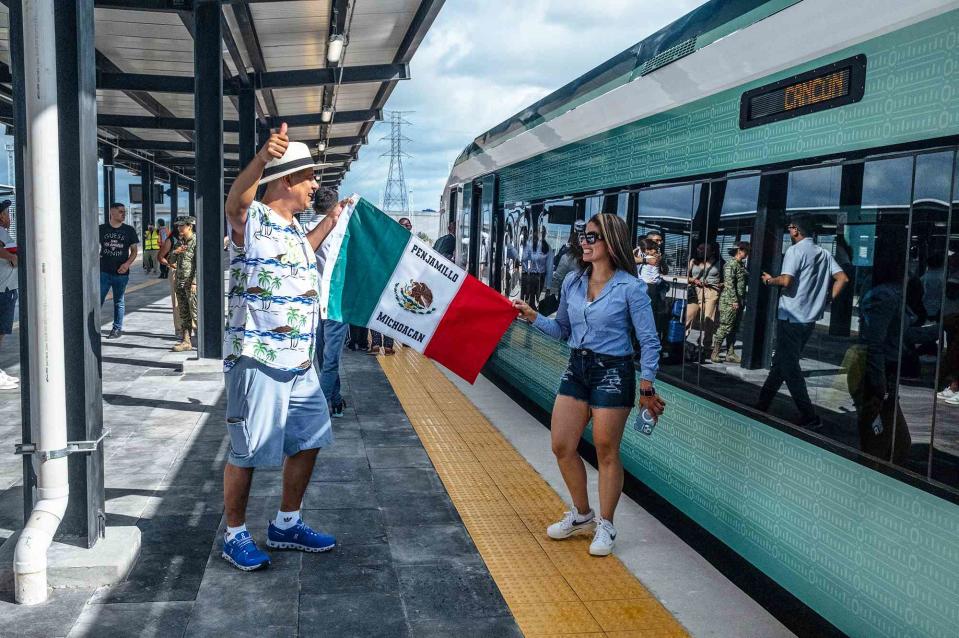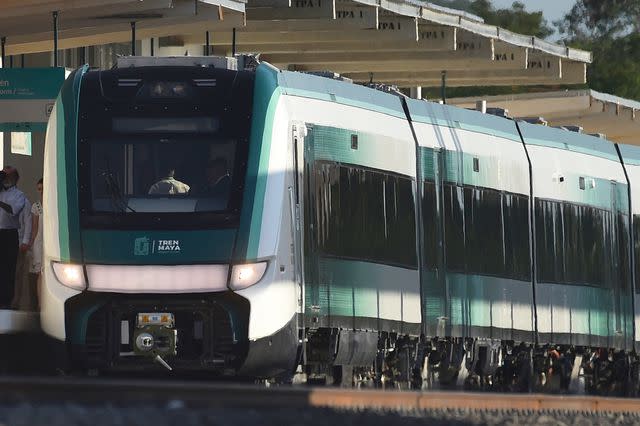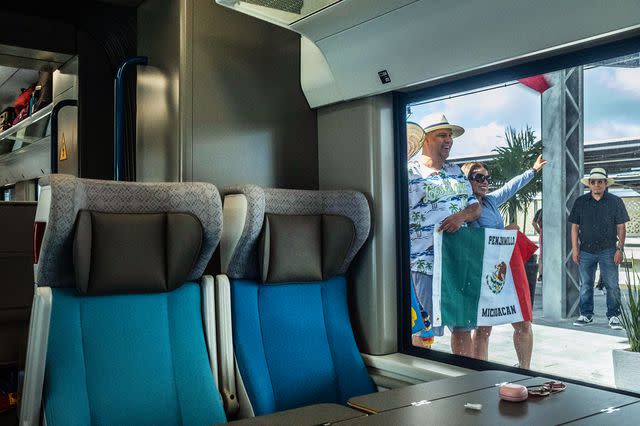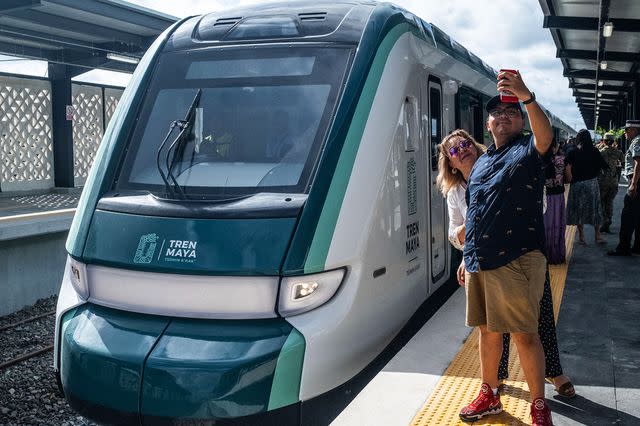Mexico Debuted the First Section of a New 950-mile Train — and It Takes Passengers to Some of the Nation's Most Beautiful Places
El Tren Maya is not without controversy, though.

Koral Carballo/Getty Images
Mexico finally cut the ribbon on one of its most ambitious tourism projects yet with the unveiling of El Tren Maya, aka The Maya Train, a new 290-mile track connecting famed archeological sites across the Yucatán peninsula. And it plans to open an additional 600 miles of track in the future.
Once complete, Tren Maya will include more than 40 trains stopping at 34 stations across southeast Mexico, including in the states of Campeche, Chiapas, Quintana Roo, Tabasco, and Yucatán, and will connect passengers to interior landscapes that are otherwise impossible to access.
“There is a large section of the interior of the peninsula that doesn’t have highways or roads,” Marilyn Masson, professor of anthropology at the University at Albany SUNY, told The Washington Post. “In the more remote sections, the train could potentially help these communities be better connected to the outside world.”

RODRIGO OROPEZA/Getty Images
However, at the time of publication, passengers can only travel between Cancún and Campeche, and can only disembark the train at Teya, the local news outlet Expansion reported. Once it’s fully operational, travelers should be able to make 14 stops along this first section of the train’s route and disembark to see the famed Mayan ruins at Chichén Itzá. The Washington Post additionally reported that officials aim to have the final stages of the train complete by late February. It will ultimately also connect Cancún to Puerto Morelos, Playa del Carmen, and Tulum, running down the Caribbean coast before looping back into the region’s interior.
Travelers will be able to book three different train experiences: the Xiinbal, Janal, or P’atal train. The Xiinbal, which translates to "walking" in the Maya language, is meant for standard service to get passengers from point A to point B. Inside the train, passengers will find comfortable seating areas with large picture windows so they can enjoy the view while en route. The train promises to travel at about 99 miles per hour, however, The Washington Post reports this number may be inflated.

Koral Carballo/Getty Images
On the Janal train, which translates to “to eat,” guests will find dining cars dedicated to serving traditional dishes while traveling through the gorgeous landscapes. “The concept of the restaurant was inspired by the work of the modernist architect Luis Barragán, a Mexican passionate about aesthetics and nature,” the train’s website explained. “His style is a world reference in architecture. This model has comfortable spaces designed to enjoy regional cuisine.”
And finally, there’s the P'atal train, which means “stay,” which you may have guessed is the company’s sleeper car service. “Designed to travel long stretches of track, this train has comfortable cabins that allow you to enjoy the trip at all times. It has all the necessary amenities to relax and enjoy,” the train’s website added.

Koral Carballo/Getty Images
It should be noted that while the train does come with plenty of promise, it isn’t without its controversies. For starters, the project is already wildly over budget. According to the Associated Press, the original projected cost sat at $8.6 billion, however, Mexico’s Treasury Secretary Rogelio Ramírez noted that the final cost would be somewhere in the ballpark of $28 billion.
Additionally, environmental groups have argued that the train’s planned route may cause deforestation and loss of habitat to local wildlife, including to jaguars and scarlet macaws. While officials initially claimed no trees would be lost in the train’s construction, later reports noted more than 3 million trees have been felled in the process.
There have also been reports that the train may be displacing the very same local families and indigenous people it promises to assist. However, according to a United Nations Human Settlements Program report, the train has the potential to lift more than 1 million people out of poverty by 2030. (A later release by the UN’s Human Rights Office of the High Commissioner expressed concern that the train “was endangering the rights of indigenous peoples and other communities to land and natural resources, cultural rights and the right to a healthy and sustainable environment.”)
In response to environmental concerns, an official from the Mexican Embassy shared with The Washington Post via email, “This project is not a binary choice between development and environmental damage; it represents a balanced approach that takes into account the preservation of the region’s unique ecosystems while promoting growth and prosperity.”
Right now, tickets are being sold on Tren Maya’s website. We found tickets going for as low as $43 for tourist class seats, and up to $68 for premier class. Officials have said locals will be given a preferential rate to ensure the train really is for all, however, Expansion noted that pricing has not been made public yet.
Related: What Every Traveler Should Know About the Maya in Mexico's Yucatan Peninsula
For more Travel & Leisure news, make sure to sign up for our newsletter!
Read the original article on Travel & Leisure.

